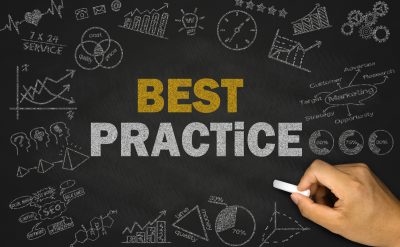The number of LMS providers has spiked. The primary reason for this is the increasing acceptance and demand for e-learning. Organizations understand the value of online, self-paced courseware that they were skeptical of about five years ago. As e-learning grows, the need for platforms through which to launch, consume, track, and report on e-learning grows correspondingly.
When it comes to LMS, a lot of questions come to mind because it is indeed an investment and also a tedious process to set it up. The most crucial question asked is, ‘given the wide variety in providers and feature sets, how does one go about selecting the right system for an enterprise?’
There is a little on-going debate about the steps involved in the selection process of LMS. There is one school of thought that says there are nine steps involved, whereas the other school of thought argues that the process can be completed in six steps. We have decided to go with the best of both worlds and cheery pick the Six Ideal Ways to Evaluate LMS Solutions:
1. The LMS Business Case – Develop and amp; Communicate:
The very first step is to formulate a plan; after all, a goal without a plan is just a wish. And at the heart of that plan must be the objectives. Having a clear understanding of the organization’s L and amp;D is vital to this step. The objective statements should be as:
- Increase sales
- Drive expansion into new markets
- Reduce costs
After these objectives are adequately addressed, start gathering your requirements and big rocks. Your high-level statements should include both your mission and amp; goals that are critical functional requirements. For example, the top 4 Big Rocks for a talent management firm can be:
- Functionality
- Global Capabilities
- Delivery Model
- Architecture
2. Circle down on a Provider and amp; Make Initial Contact to Create a Request for Information (RFI)
By identifying the “big rocks,” your organization can effectively narrow the field of providers that are appropriate for a more in-depth evaluation process. And if you have zeroed in on your unique mix of requirements as mentioned above, you will save your organization precious time and money.
Developing and submitting an RFI to your select group of vendors is the next step. The purpose of the RFI is to get enough information from the vendors to determine if you should spend any more time with them. Include the big rocks or other vendor characteristics that you cannot do without, and ask the vendors to respond as to how they would fulfill each one of your needs. You may need to qualify the vendors on aspects other than product features. You need to ask vendors to be transparent about their cost breakup and/or if they have some hidden costs for particular services you need.
The RFI will help reduce the time you spend with vendors that do not meet your needs. Be very selective—you should not submit the RFI to any more than ten vendors and crowd your options.
3. Develop Detailed Requirements Documentation
Once you have received approval of the business case, it is time to document the detailed requirements and selection criteria you will use to evaluate the shortlisted providers. Process documentation is a useful starting place. Each process step, with inputs and outputs, should represent one (or many) features that you would like to have in a system. We recommend that you identify the features you need to have for the initial deployment separately from the features you will need in subsequent phases of learning and training.
Many providers are feature-rich in some areas and lighter in newly developed or acquired applications. Developing a clear understanding of your immediate and long-term training needs will aid in the evaluation of how a provider’s product roadmap aligns with your roadmap.
4. Evaluate Providers
Organizations usually have multiple stakeholders in the evaluation of the providers’ responses and onsite demonstrations. With numerous perspectives evaluating different aspects of a provider’s submission and information, the evaluation process quickly becomes unwieldy (much like this sentence). Therefore, we highly recommended that you develop an evaluation scorecard for this integral step.
After evaluating them, you need to start scoring these solution providers based on your parameters. It is recommended that team members individually score vendors and then come together to calibrate those scores with each other.
#ProTip: Complete this evaluation before the provider demonstrations begin so that items in question or that require further discussion can be highlighted and addressed when the provider is onsite.
The top 3 providers (as per the evaluation) should be invited onsite so that a thorough overview can be provided about organizational goals, so that you can gauge if selected vendors can support you. The objective is to match providers to your exact requirements, and it is essential to provide them with as much support and context on this as possible.
5. Check Provider References
There is no substitute for a reference. Have the vendor’s LMS solutions added value to organizations similar to yours?
We recommend that organizations interview five customer references from the provider using a standard set of interview questions. It is better to have customer references from organizations of similar size and industry, with common business strategies and use cases as your own.
6. Make Your Informed Recommendation
Now that you have all the information, you need to make a final product selection. Once the team has scored the providers in the intended areas, it is time to make a recommendation to crucial stakeholders. The final summary should include all the feedback—including the information gathered by the procurement department on pre-negotiated pricing, service-level terms, and an analysis of the provider’s financial performance.
You should identify your top two recommendations (just in case contract negotiations with your top provider do not work out). If you discover that more than one vendor will meet your needs, then you will be in an excellent position to select the vendor that gives you the best price.
To conclude:
Organizations are sticking with LMS providers that stay focused on learning—The LMS landscape is being reinvented. Standard functionality is being commoditized, and solution providers are focusing on differentiating their offerings. It’s an excellent time to get customized, value generating LMS solutions in place for your organization.













